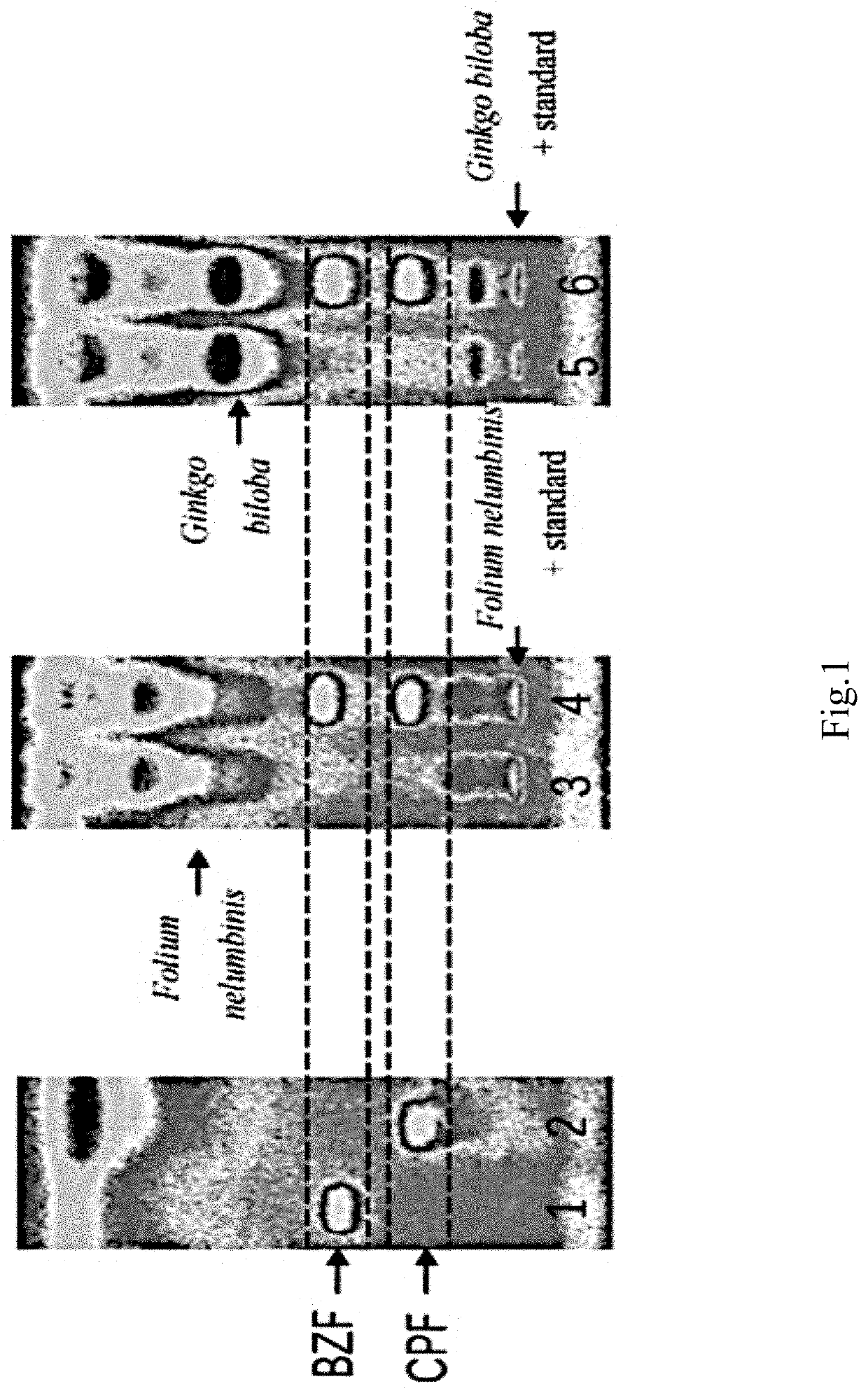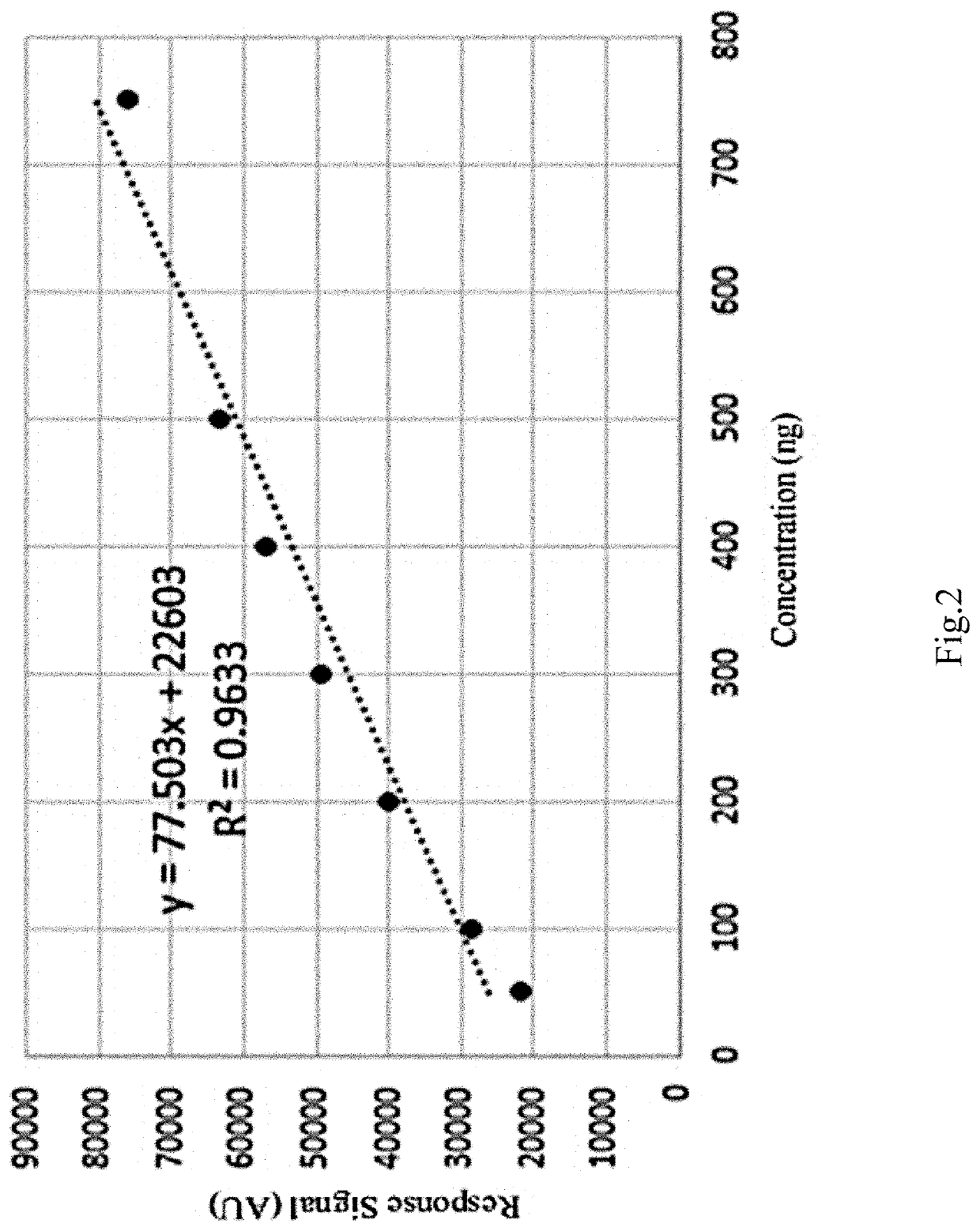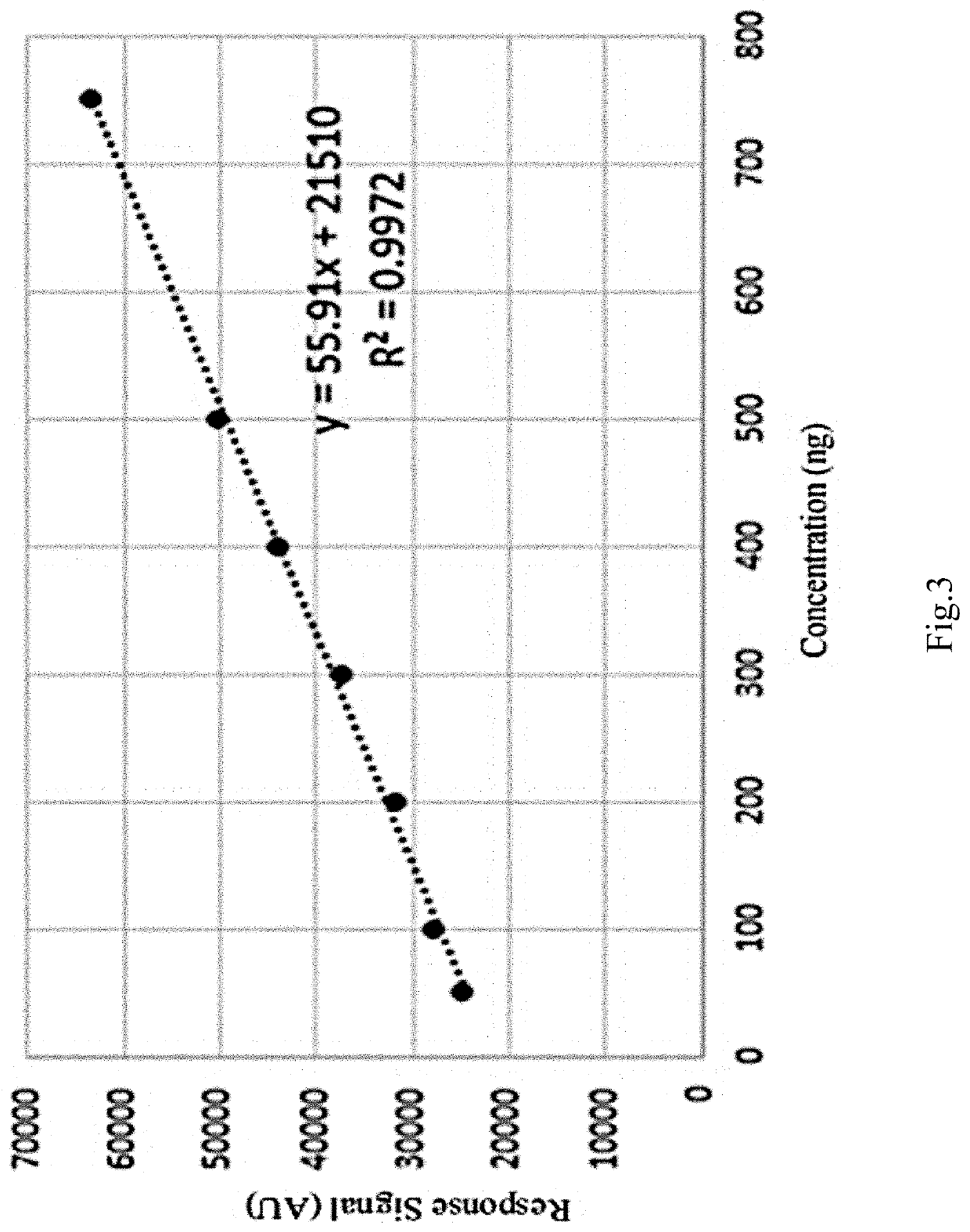Method for screening adulteration of fibrate Anti-hyperlipidemia chemicals in tea by combined method of high performance thin layer chromatography and bioluminescence
a technology of fibrate and anti-hyperlipidemia, which is applied in the field of food inspection, can solve the problems of serious poisoning and side effects, endanger life, and blowout manner of accompanying food and medicine safety problems
- Summary
- Abstract
- Description
- Claims
- Application Information
AI Technical Summary
Benefits of technology
Problems solved by technology
Method used
Image
Examples
example 1
[0039](1) formulation of simulated seawater liquid and solid medium: formulating a simulated seawater liquid medium according to the following formula: 30 g / L of NaCl, 5 g / L of Na2HPO4, 5 g / L of KH2PO4, 3 ml / L of glycerol, 5 g / L of peptone, and 5 g / L of a yeast extract, adding 1 L of ultrapure water to dissolve under stirring; adjusting the pH value to 7.5±0.2 with 1 mol / L of sodium hydroxide solution, and carrying out sterilization treatment at 121° C. for 15 min within a high-pressure steam sterilization pot to obtain a simulated seawater liquid medium, then packaging the simulated seawater liquid medium and refrigerating it in a refrigerator for later use, and the simulated seawater liquid medium could be stored in an environment of 4° C. for 7 days when being idle; and
[0040](2) culture and preservation of luminous strains: inoculating luminous bacteria cryopreserved with glycerol into a triangular flask containing 100 mL of the liquid medium prepared in the step (1); wrapping th...
example 2
[0050](1) formulation of simulated seawater liquid and solid medium: formulating a simulated seawater liquid medium according to the following formula: 30 g / L of NaCl, 5 g / L of Na2HPO4, 5 g / L of KH2PO4, 3 ml / L of glycerol, 5 g / L of peptone, and 5 g / L of a yeast extract, adding 1 L of ultrapure water to dissolve under stirring; adjusting the pH value to 7.5±0.2 with 1 mol / L of sodium hydroxide solution, and carrying out sterilization treatment at 121° C. for 15 min within a high-pressure steam sterilization pot to obtain a simulated seawater liquid medium, then packaging the simulated seawater liquid medium and refrigerating it in a refrigerator for later use, and the simulated seawater liquid medium could be stored in an environment of 4° C. for 7 days when being idle; and
[0051](2) culture and preservation of luminous strains: inoculating luminous bacteria cryopreserved with glycerol into a triangular flask containing 100 mL of the liquid medium prepared in the step (1); wrapping th...
example 3
[0062](1) formulation of simulated seawater liquid and solid medium: formulating a simulated seawater liquid medium according to the following formula: 30 g / L of NaCl, 5 g / L of Na2HPO4, 5 g / L of KH2PO4, 3 ml / L of glycerol, 5 g / L of peptone, and 5 g / L of a yeast extract, adding 1 L of ultrapure water to dissolve under stirring; adjusting the pH value to 7.5±0.2 with 1 mol / L of sodium hydroxide solution, and carrying out sterilization treatment at 121° C. for 15 min within a high-pressure steam sterilization pot to obtain a simulated seawater liquid medium, then packaging the simulated seawater liquid medium and refrigerating it in a refrigerator for later use, and the simulated seawater liquid medium could be stored in an environment of 4° C. for 7 days when being idle; and
[0063](2) culture and preservation of luminous strains: inoculating luminous bacteria cryopreserved with glycerol into a triangular flask containing 100 mL of the liquid medium prepared in the step (1); wrapping th...
PUM
 Login to View More
Login to View More Abstract
Description
Claims
Application Information
 Login to View More
Login to View More - R&D
- Intellectual Property
- Life Sciences
- Materials
- Tech Scout
- Unparalleled Data Quality
- Higher Quality Content
- 60% Fewer Hallucinations
Browse by: Latest US Patents, China's latest patents, Technical Efficacy Thesaurus, Application Domain, Technology Topic, Popular Technical Reports.
© 2025 PatSnap. All rights reserved.Legal|Privacy policy|Modern Slavery Act Transparency Statement|Sitemap|About US| Contact US: help@patsnap.com



